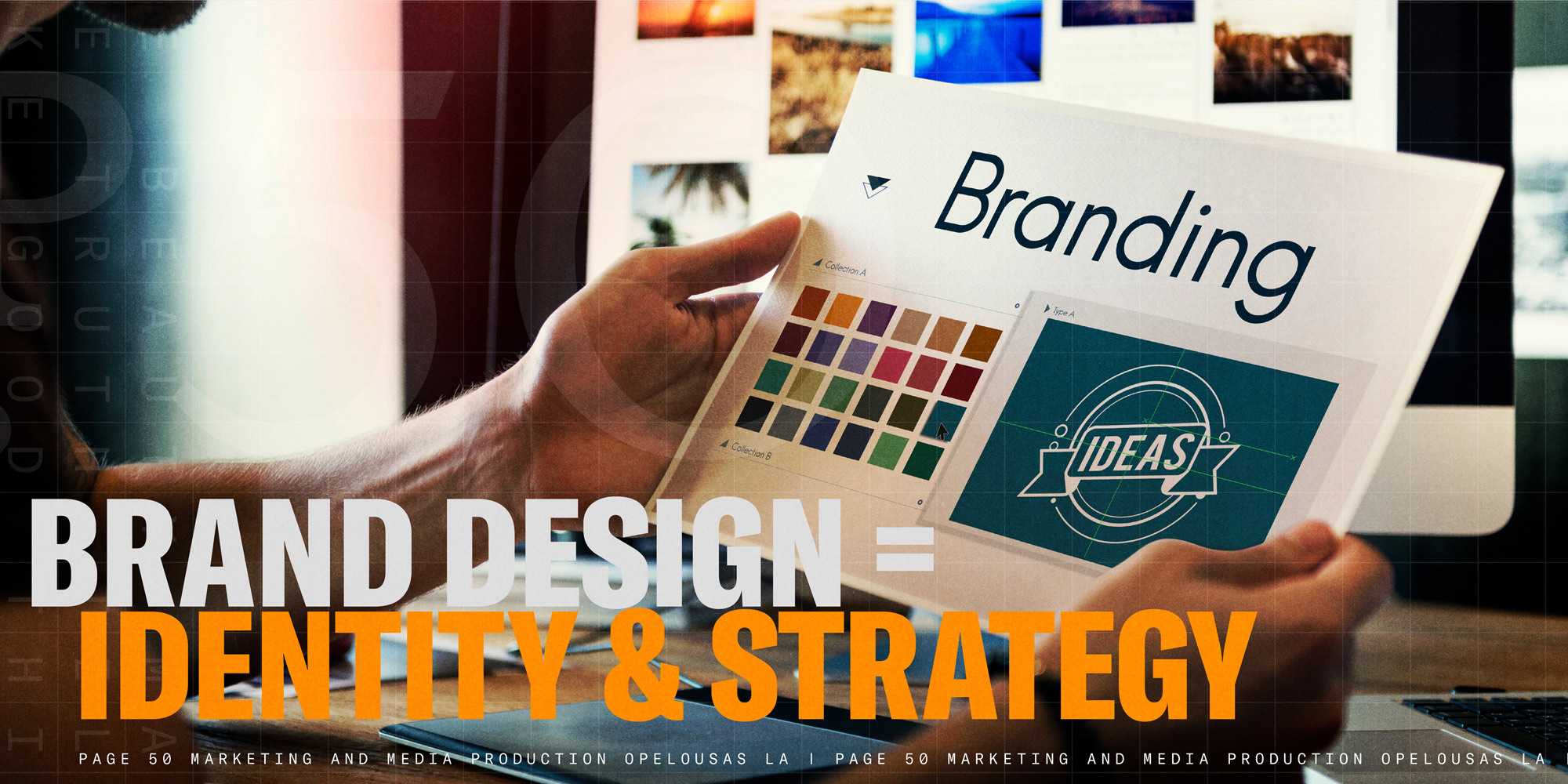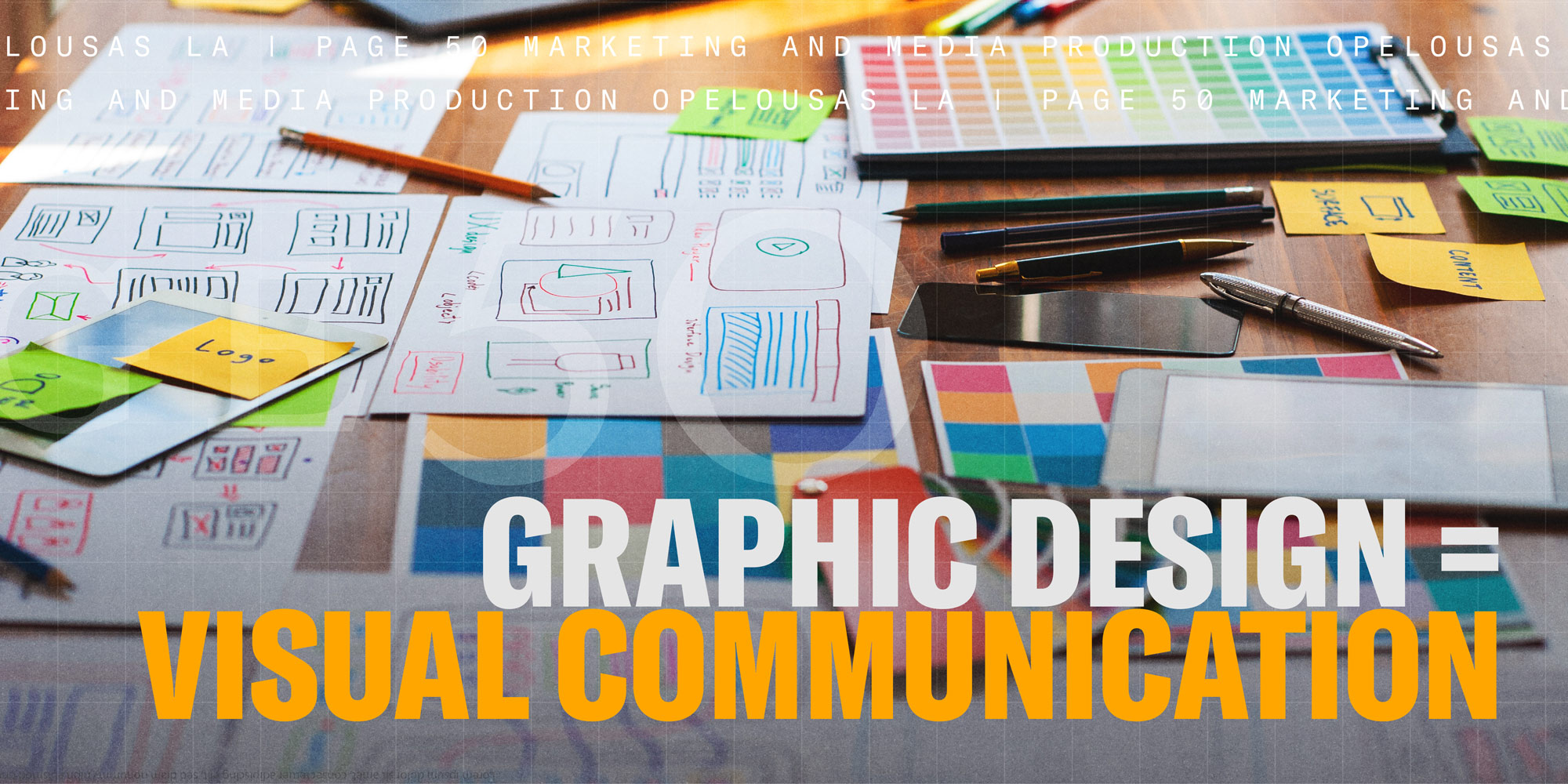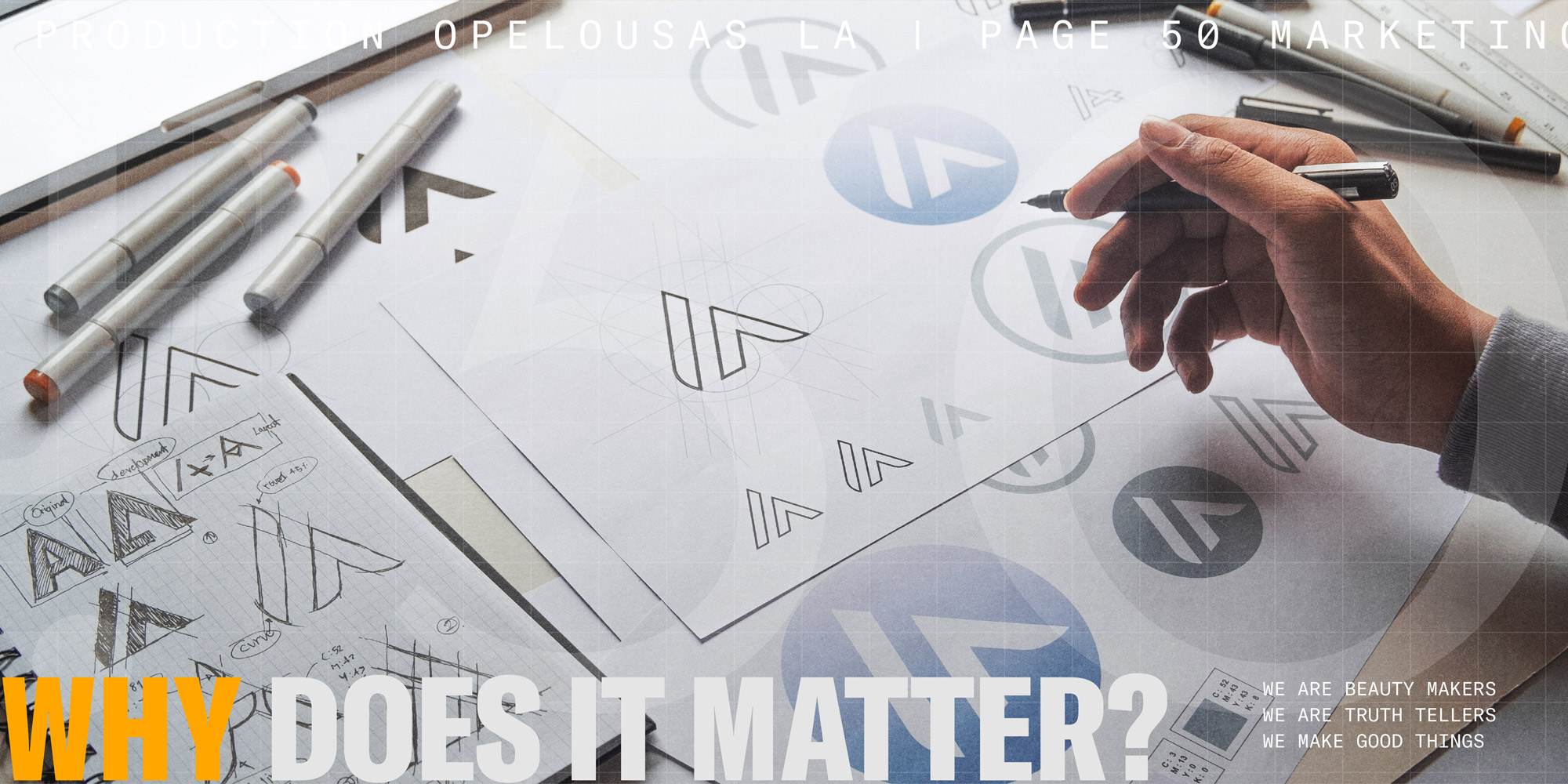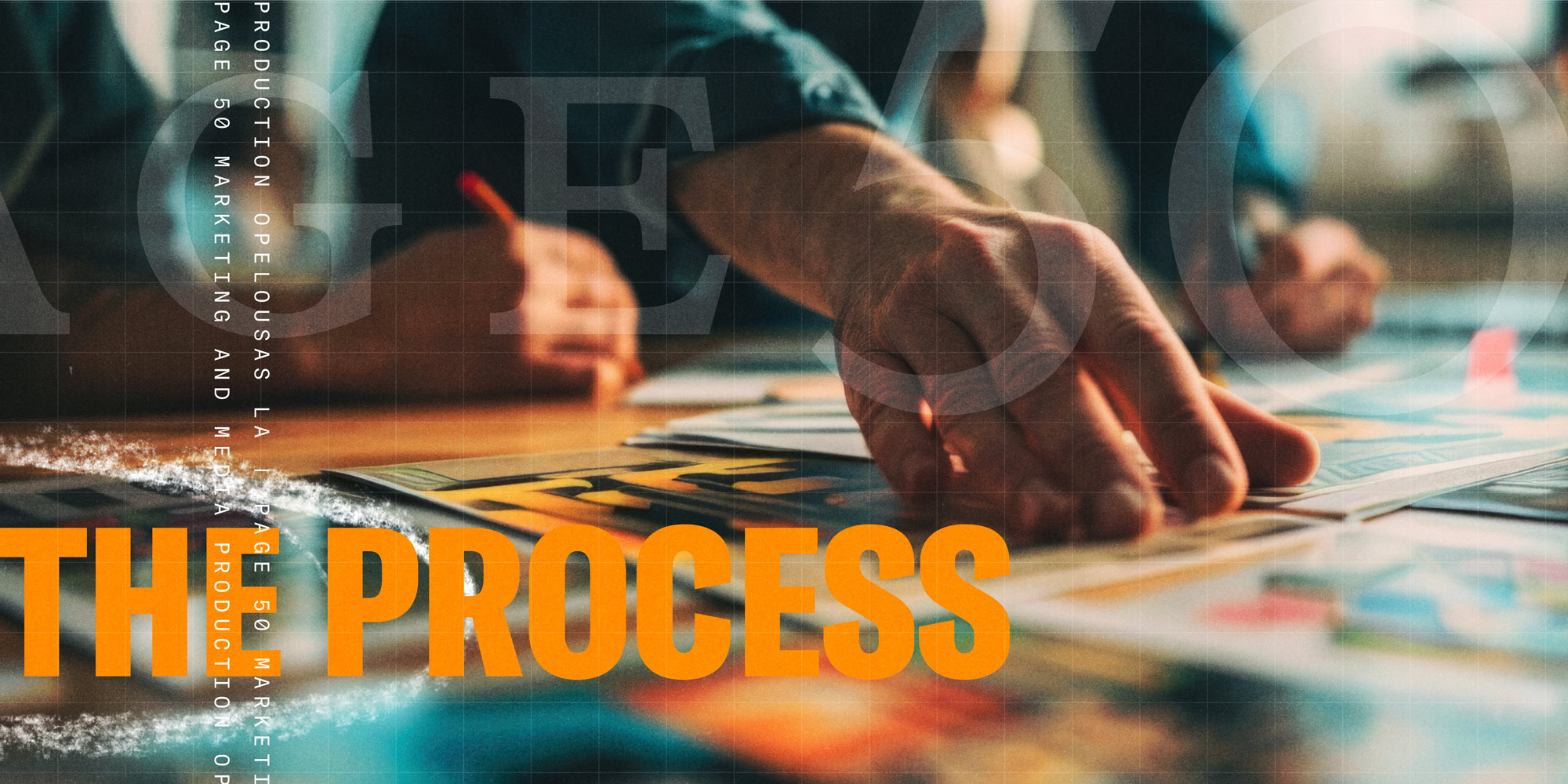
Brand design and graphic design are both essential for a business to thrive- but they serve different roles. Getting them right, and in the right order, ensures strong, clear, and effective communication to your target audience.
Here’s a breakdown of the difference between these two types of design work, and why it matters:
What’s the Difference?
Brand Design = Identity & Strategy

- Focus: The overall visual identity and personality of a brand.
- Includes: Logo, color palette, typography, tone of voice, visual style, brand guidelines.
- Purpose: To shape how a company is perceived by creating a consistent and memorable identity.
- Big Picture: It’s all inclusive, long-term, and strategic. Brand design includes everything that communicates the soul of the brand, not just the graphics they produce.
The brand design should specify how a company will communicate their identity and personality to customers and the community at large.
Helpful tools and considerations for molding this identity might include a mission statement, well defined company core values, audience demographic data, sentiment analysis from past and current clients, and which platforms the company will use for outgoing communications.
Brand designers create a detailed plan for communicating who your company is and isn’t.
Graphic Design = Visual Communication

- Focus: Creating visuals to communicate messages clearly and effectively.
- Includes: Posters, brochures, ads, websites, social media graphics, product packaging, business cards, etc.
- Purpose: To visually express ideas, promote content, or solve design problems- usually based on an existing brand.
- Execution: Graphic design is more task-oriented and may vary from project to project.
All finished graphic design products should reflect the company’s identity and adhere to the brand design. Using a slightly different font or color can throw off the tone of an image, so graphic design should stay within the parameters of the brand design.
Brand design = who you are.
Graphic design = how you say it.
Why Does the Difference Matter?

1. Clarity in Design Goals
- Brand design builds trust and recognition with customers and a broader audience. Graphic design delivers messages within the brand identity by applying branding guidelines to what they create.
- Confusing the two types of design leads to inconsistent visuals and mixed messaging.
2. Business Strategy
- Without solid brand design, graphic design products can feel disjointed or forgettable.
- A well-designed brand gives all future visuals a clear foundation and direction.
- Consistency in branding shows potential leads that you know who you are, you know what you’re doing, and what they can expect from you.
3. Who You Hire (or Become)
- If you’re hiring someone (or marketing yourself), it’s crucial to know:
- A brand designer develops the full identity system.
- A graphic designer applies that system in day-to-day visuals.
4. Creative Career Paths
- Brand designers tend to be involved earlier in the business/marketing process and will therefore likely partner with a series of businesses over time.
- Graphic designers focus more on output and production and could operate within one company or as a contractor or freelancer.
- Understanding this distinction helps designers specialize and position themselves better for the jobs at which they truly excel.
The Process
 Brand strategists and brand designers look at your target audience, then craft a set of visual and tonal specifications that will connect with them, as well as accurately represent your company’s identity.
Brand strategists and brand designers look at your target audience, then craft a set of visual and tonal specifications that will connect with them, as well as accurately represent your company’s identity.
Your brand designer will likely create a branding package with guidelines for any future graphic design work your business puts out. The right branding guide allows a graphic designer to align all visual elements to a consistent standard. Fonts, colors, etc. won’t just be close- they’ll be the same across the board- and your graphic designer’s job is made a bit easier.
Small, unintentional, deviations that don’t fit can make you look like a bad imitation of yourself. Customers may not be able to put their finger on what’s different, but on some level, they’ll notice when a detail is off and it can make them feel uneasy.
Rebranding
A brand designer may also be brought in to do a refresh- a subtle, intentional change of existing branding for the better. This would mean the creation of a new branding guide, not just “shaking things up” with random changes.
Can One Designer Do Both?
Yes, but they are different jobs, or at least different specialties within one job. If one designer does both brand design and graphic design, it should be noted that the brand design has to happen first. There will be some graphic design done during the branding process, but the goal is to nail down the brand design, then implement those decisions going forward.
A talented graphic designer may have a great eye for aesthetics, but still not be a branding expert, or may be too focused on minute details in daily work to develop the bigger picture of the brand as a whole. Conversely, a brand designer might find the steady grind of standardized graphic design work to be monotonous and have a tendency to drift away from the agreed upon messaging as a whole.
Time for Action
 Now that we’ve covered the differences between brand and graphic design, and the effects they have in the realms of branding and staffing, it’s time to assess your situation and decide what you need. Do you already have a strong, clear brand identity? You may just need a graphic designer. Is your visual messaging disjointed or dated? A brand designer and a rebrand might be the way to go. Now go, meet with a few options and find the right fit for your company.
Now that we’ve covered the differences between brand and graphic design, and the effects they have in the realms of branding and staffing, it’s time to assess your situation and decide what you need. Do you already have a strong, clear brand identity? You may just need a graphic designer. Is your visual messaging disjointed or dated? A brand designer and a rebrand might be the way to go. Now go, meet with a few options and find the right fit for your company.